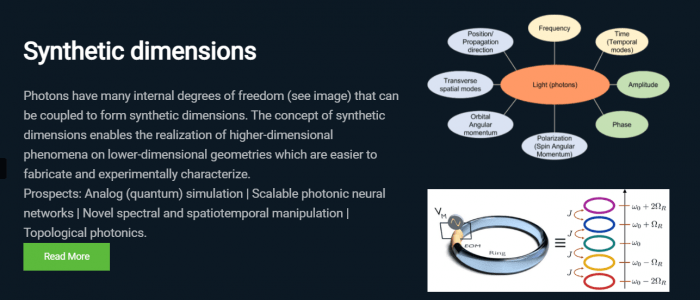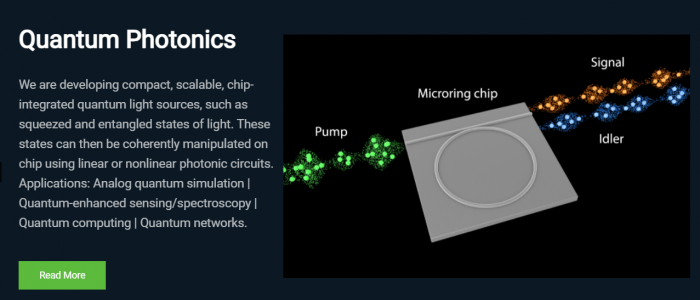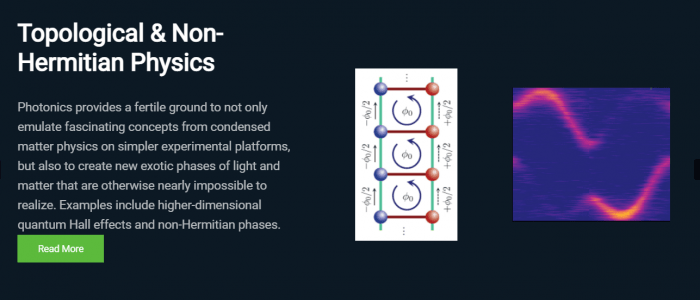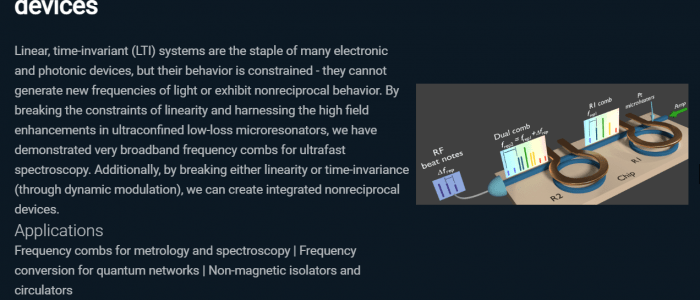We aim to harness the beneficial properties of photons (or of light, more generally) to build scalable quantum and classical technologies, while also pursuing fundamental research into light-matter interactions. Our research is very interdisciplinary, involving ideas from quantum optics, nanofabrication, condensed matter physics, nonlinear optics and gradient-based optimization.
We value investigating open research challenges in depth, and at the same time value innovative solutions encompassing a breadth of techniques. Two representative examples of the breadth are outlined below.
- From microrings to macrorings: We have used in-house nanofabricated microring resonators for quantum and nonlinear optics on chip. At the other extreme, we have used meter-scale macroring resonators built from commercially available fiber components for topological photonics. Opportunities also exist for combining the best of both worlds by generating quantum states on chip and interfering them off chip, as shown in this paper, or vice-versa, as shown in this paper.
- Fundamental research to practical applications: We pursue fundamental studies – such as the realization of high-dimensional exotic phases of light and matter and a thorough characterization of their topological properties (see our works on quantum Hall phases and on non-Hermitian winding and braiding). On the contrary, we create new designs and architectures for practical applications in quantum computing and machine learning hardware – such as realizing faster, fully reconfigurable, resource-efficient matrix-vector multiplications using photonics, and universal deterministic quantum computing with minimal resources.
A unifying theme that has often cut across this spectrum of fundamental to applied research is the concept of synthetic dimensions, since this concept takes advantage of the multitude of internal degrees of freedom afforded by photons such as frequency, polarization, and spatiotemporal mode structure.
All projects typically involve a subset of {theory, modeling/simulations, design/optimization, cleanroom fabrication, and experiments}.



